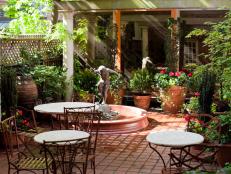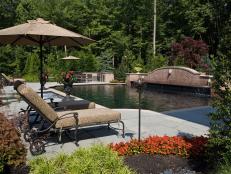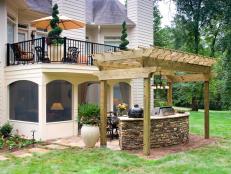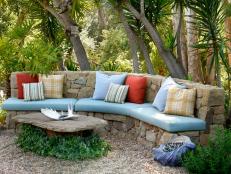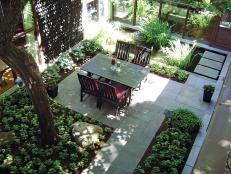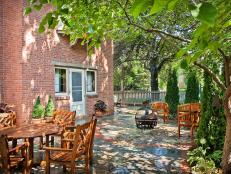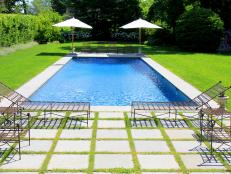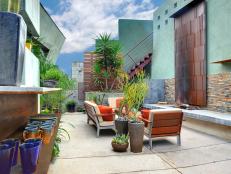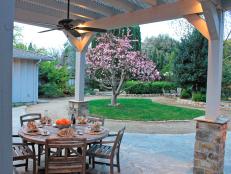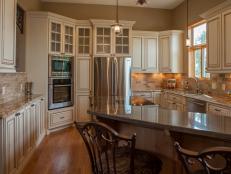Mediterranean-Style Garden

When garden designer Amber Freda was called in to help New York University redesign an outdoor space connected with teaching Italian, what could have been more appropriate than a Mediterranean-style room?
Because of the difference in climates, she took some artistic license with planting and hardscape materials, yet still conjured up that romantic destination.
Describe the homeowners' wishlist.
We wanted the look and feeling of a Mediterranean garden, with comfortable, inviting places for people to eat, read and enjoy the outdoor space. The client also asked that the garden be as low-maintenance as possible, which is why we installed an automated drip irrigation system.
Mediterranean Garden Patio
See All PhotosWhat were the homeowners' design problems?
We wanted to use high-quality terra cotta that could stay outdoors year-round and wouldn't crack in the winter, so we chose thicker, handmade pots that are at least one to two inches thick. Also, this garden is surrounded by trees and buildings in New York, so it's very shady, unlike most true Mediterranean gardens. We had to choose plants that look like they came from the Mediterranean, but would also tolerate partial shade.
What was your biggest obstacle in this space?
We needed to create the look of Italian cypresses and boxwoods, which are staples in Old World gardens, but there simply wasn't enough light in this urban small garden for either of those plants to survive. Our solution was to use clipped "Manhattan" euonymus in place of boxwoods and Japanese plum yews in place of the cypress trees.
How does the end result match up with your original vision?
The biggest obstacle we had initially was that we ran the irrigation lines up and over the pergola beams, but squirrels kept scampering down from the trees and chewing up the irrigation lines to get to the water. Our solution became easier when the client decided to upgrade the terra cotta tiles to a pedestal system that allowed us to run the irrigation lines under the pavers.
What lessons did you learn?
It taught me that you don't have to do things by the book. We were able to create a Mediterranean-style garden using plants that wouldn't necessarily even grow or do well in the Mediterranean, but which look similar enough that we still managed to capture the spirit and essence of that area of the world.
What are the "hidden gems"?
I think the columns really contribute a lot to the classic design style. The white door frames and the space give it some structure.







